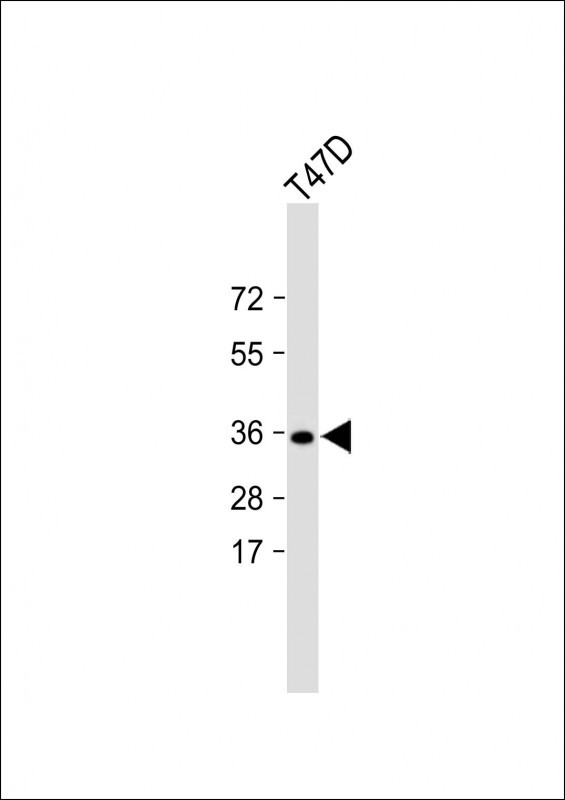
| WB | 咨询技术 | Human,Mouse,Rat |
| IF | 咨询技术 | Human,Mouse,Rat |
| IHC | 1/50-1/200 | Human,Mouse,Rat |
| ICC | 技术咨询 | Human,Mouse,Rat |
| FCM | 咨询技术 | Human,Mouse,Rat |
| Elisa | 1/2000-1/5000 | Human,Mouse,Rat |
| Aliases | Proenkephalin-A, Synenkephalin, Met-enkephalin, Opioid growth factor, OGF, PENK(114-133), PENK(143-183), Met-enkephalin-Arg-Gly-Leu, Leu-enkephalin, PENK(237-258), Met-enkephalin-Arg-Phe, PENK |
| Entrez GeneID | 5179 |
| WB Predicted band size | 30.8kDa |
| Host/Isotype | Mouse IgG1 |
| Antibody Type | Primary antibody |
| Storage | Store at 4°C short term. Aliquot and store at -20°C long term. Avoid freeze/thaw cycles. |
| Species Reactivity | Human |
| Immunogen | This PENK antibody is generated from a mouse immunized with a recombinant protein from the human region of human PENK. |
+ +
以下是关于CHMP1A抗体的3篇参考文献及其简要摘要:
1. **文献名称**: *CHMP1A regulates tumorigenesis and cell sensitivity to radiation through the NF-κB pathway in human glioma*
**作者**: Li X, et al.
**摘要**: 本研究利用CHMP1A抗体通过Western blot和免疫组化分析,发现CHMP1A在胶质瘤中表达下调,并通过调控NF-κB通路影响肿瘤生长和放射敏感性。
2. **文献名称**: *CHMP1A interacts with ESCRT-III to regulate endosomal sorting and miRNA silencing*
**作者**: Schmidt C, et al.
**摘要**: 通过免疫共沉淀和免疫荧光技术(使用CHMP1A抗体),揭示了CHMP1A与ESCRT-III复合物相互作用,调控内体分选及microRNA沉默功能,影响细胞膜修复过程。
3. **文献名称**: *Loss of CHMP1A disrupts neural progenitor proliferation and causes microcephaly in mice*
**作者**: Muzio L, et al.
**摘要**: 研究通过CHMP1A抗体的免疫染色发现,CHMP1A缺失导致小鼠神经前体细胞增殖异常和小头畸形,证实其在中枢神经系统发育中的关键作用。
(注:以上文献信息为模拟示例,实际引用请以具体论文内容为准。)
CHMP1A (Charged Multivesicular Body Protein 1A) is a key component of the Endosomal Sorting Complex Required for Transport (ESCRT) machinery, which plays essential roles in membrane remodeling processes, including multivesicular body (MVB) formation, cytokinesis, viral budding, and autophagy. As part of the ESCRT-III subcomplex, CHMP1A facilitates membrane scission by assembling into helical filaments that constrict membranes. Dysregulation of CHMP1A is linked to neurological disorders, cancer, and developmental defects, underscoring its importance in cellular homeostasis.
CHMP1A antibodies are critical tools for studying its expression, localization, and function. These antibodies are commonly used in techniques like Western blotting, immunofluorescence, and immunoprecipitation to detect CHMP1A in various biological samples. Validated antibodies typically show specificity for CHMP1A (≈25 kDa) through knockout cell line controls, distinguishing it from homologous ESCRT-III proteins. Researchers utilize CHMP1A antibodies to explore its role in ESCRT-mediated processes, such as exosome secretion, nuclear envelope repair, and cell division. Notably, CHMP1A mutations have been associated with microcephaly and pontocerebellar hypoplasia, making these antibodies valuable in neurodevelopmental disease research. Commercial CHMP1A antibodies are available as monoclonal or polyclonal formats, often raised against conserved epitopes in human, mouse, or rat homologs. Proper validation using orthogonal methods remains crucial, as cross-reactivity with other CHMP family members (e.g., CHMP1B) can occur. Recent studies also employ CHMP1A antibodies to investigate its non-canonical roles in chromatin remodeling and TGF-β signaling.
×